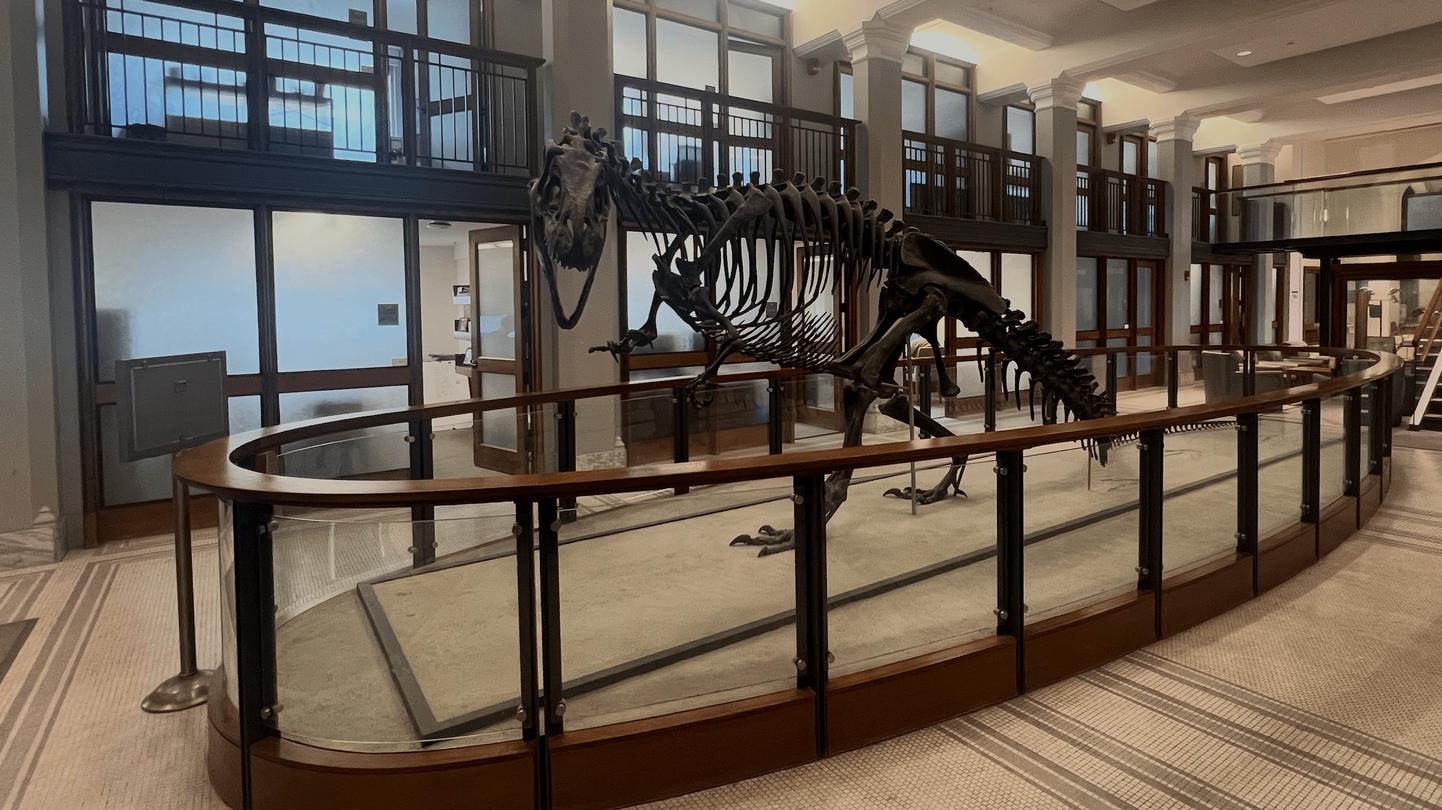Guyot Hall’s Allosaurus Gets a Facelift

On display for over 60 years at Princeton, the iconic dinosaur has journeyed to Canada for restoration and will return to a new home on campus next year.
If you’ve recently walked through Guyot Hall, you may have noticed a startling absence in the home of Princeton’s Department of Geosciences. For over six decades, the towering skeleton of Al, the University’s Allosaurus, has stood grandly in the building’s central foyer. Wondering where Al has gotten to? The beloved dinosaur was carefully disassembled and sent to Canada for some much-needed TLC in October. Al’s reinstallment is set for spring 2025 in the University’s new Environmental Studies (ES) building, the future hub of the geosciences and ecology and evolutionary biology departments and the High Meadows Environmental Institute.
The specimen’s journey to Princeton began in 1939 when a team of paleontologists, led by graduate student W. Lee Stokes, Ph.D. 1941, excavated fossils at the Cleveland-Lloyd Dinosaur Quarry in Utah over three summer field seasons from 1939 to 1941. The team was searching for specimens to contribute to a University museum exhibit when they discovered Allosaurus bones from multiple individuals. A number of these bones were eventually assembled into the composite skeleton we now know as “Al.” However, due to World War II, the preparation and assembly of the bones, which was conducted at Yale University, were not completed until 1960. Al was then put on display at Princeton in 1961.
 Al during the installation in Guyot Hall, 1961. Photo courtesy of the Department of Geosciences.
Al during the installation in Guyot Hall, 1961. Photo courtesy of the Department of Geosciences.
But why, after all these years, is Al undergoing a major restoration? It’s more than just cosmetics. Recent research revealed that Allosaurus, contrary to previous findings, did not drag their tails but instead held them horizontally, which prompted a reassessment of the skeleton.
“Al’s pose was up to date for the time, but we’ve learned so much about dinosaur biology and behavior in the intervening 60 years, so an update to certain parts of the skeleton is needed,” said Christopher Griffin, assistant professor of geosciences.
Managing the repositioning and restoration work is Research Casting International (RCI), an industry leader in fossil restoration and specimen mounting. RCI is renowned for its work on high-profile exhibitions, including SUE the T. rex at the Field Museum of Chicago, the Smithsonian’s Hall of Fossils, and the Natural History Museum in London. Their expertise has also extended to the film industry, where they helped bring dinosaurs to life in the original “Jurassic Park.”
In addition to its new pose, Al’s restoration also includes cleaning and repairs, creating new opportunities for researchers and enabling the Princeton community and visitors to experience a scientifically accurate and an even more awe-inspiring dinosaur.
"The restoration will ensure that the Allosaurus will be preserved for future generations of students and visitors, as well as illustrate that there is more to be learned from these ancient creatures as scientific understanding progresses,” said geosciences academic laboratory manager Laurel Goodell.
While we await Al’s big reveal in the spring, learn more about his life and history by checking out the digital version of the poster on display in Guyot Hall, and following news and social media updates from Princeton's geosciences department.
 Al packed and ready to be shipped for restoration. Photo courtesy of the Department of Geosciences.
Al packed and ready to be shipped for restoration. Photo courtesy of the Department of Geosciences.
